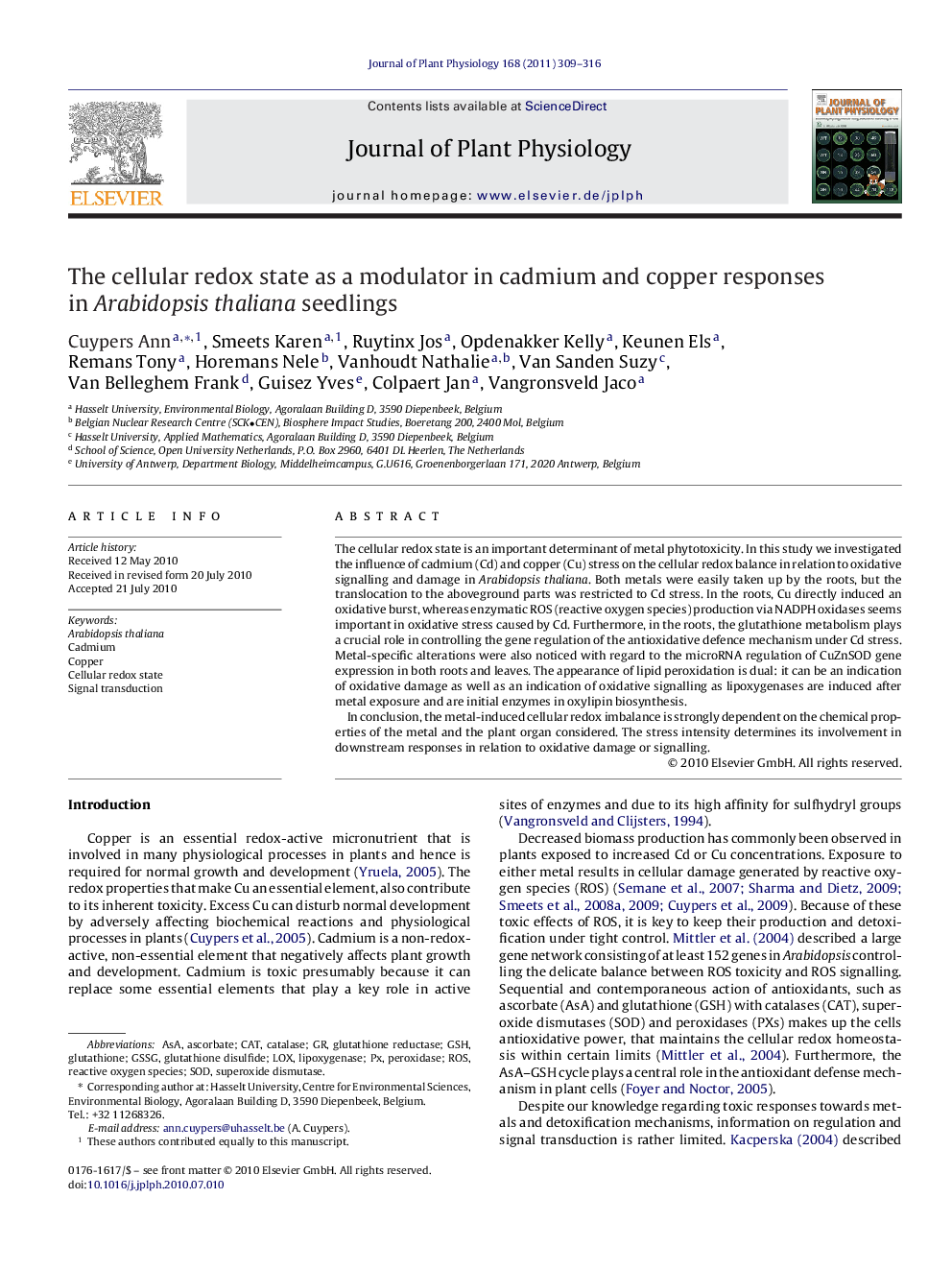| Article ID | Journal | Published Year | Pages | File Type |
|---|---|---|---|---|
| 2057777 | Journal of Plant Physiology | 2011 | 8 Pages |
The cellular redox state is an important determinant of metal phytotoxicity. In this study we investigated the influence of cadmium (Cd) and copper (Cu) stress on the cellular redox balance in relation to oxidative signalling and damage in Arabidopsis thaliana. Both metals were easily taken up by the roots, but the translocation to the aboveground parts was restricted to Cd stress. In the roots, Cu directly induced an oxidative burst, whereas enzymatic ROS (reactive oxygen species) production via NADPH oxidases seems important in oxidative stress caused by Cd. Furthermore, in the roots, the glutathione metabolism plays a crucial role in controlling the gene regulation of the antioxidative defence mechanism under Cd stress. Metal-specific alterations were also noticed with regard to the microRNA regulation of CuZnSOD gene expression in both roots and leaves. The appearance of lipid peroxidation is dual: it can be an indication of oxidative damage as well as an indication of oxidative signalling as lipoxygenases are induced after metal exposure and are initial enzymes in oxylipin biosynthesis.In conclusion, the metal-induced cellular redox imbalance is strongly dependent on the chemical properties of the metal and the plant organ considered. The stress intensity determines its involvement in downstream responses in relation to oxidative damage or signalling.
